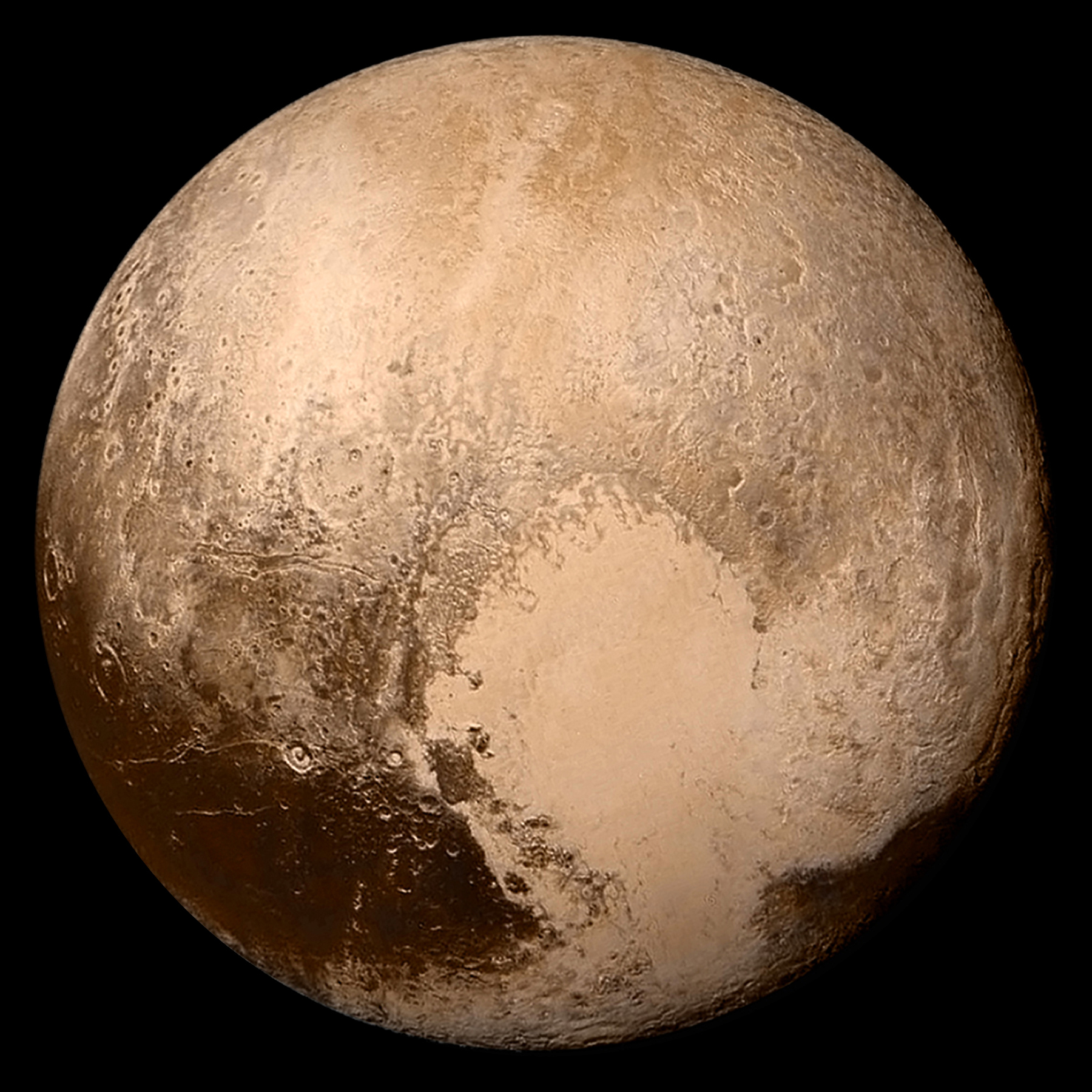As it turns out, apparently you can't go five feet in the outer solar system without hitting a subsurface ocean. Europa's got one, Enceladus has one, and Titan, Ganymede, and Callisto probably have them. That's not even mentioning the list of objects that may have them, according to models of radioactive decay. Here's a list of those.
If you're observant (or read the title of this post), you'll notice Pluto on there. I've written about Pluto on several occasions now, as data from New Horizons slowly filtered through. The data return is done, but we still have a lot of things to learn from it. Like this, for example. Based on research of Sputnik Planitia, otherwise known as Pluto's "heart", it is very likely that Pluto possesses a subsurface ocean.
It is believed Sputnik Planitia was once a vast impact basin filled with a layer of nitrogen ice about 6 miles thick. That's fine, but what's interesting is that Sputnik Planitia is oriented almost directly opposite to Charon, the smaller partner in the Pluto-Charon double planet system. This position on Pluto's tidal axis is probably not a coincidence. After the impact, the basin filled up with nitrogen ice. This happened slowly, but as this gigantic mass of ice formed, it changed the shape of the planet, causing the basin to slowly wander towards its current, more natural position on the tidal axis. And as it moved, a series of faults and fractures would have appeared across the surface. And Pluto has these faults and fractures.
Where does the subsurface ocean come in? The sort of movement that Sputnik Planitia has undergone would be impossible without a subsurface, the model depends on it, and observations seem to back up the model. The model predicts faults and fractures, and there are faults and fractures.
Further proof comes from a second study. Those scientists calculated the odds of Sputnik Planitia forming in it's current spot at about 5%, and so also believe the feature has moved over time. They found that the impact which formed the basin would have weakened the crust, bringing the subsurface ocean close to the surface. This along with the accumulation of nitrogen ice would essentially roll the (dwarf) planet around. Without the liquid water, the ice of Sputnik Planitia would have to be several times thicker than currently believed, and that doesn't match up with our observations.
So there we have it. Pluto: likely possessor of a subsurface ocean. It's still not a planet though.


No comments:
Post a Comment